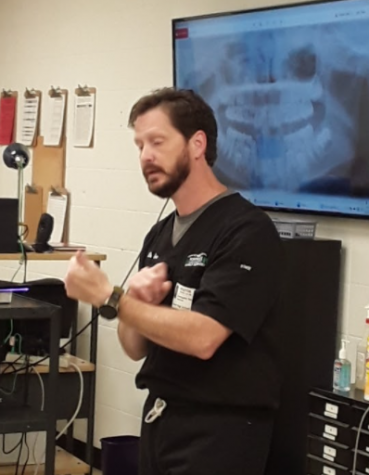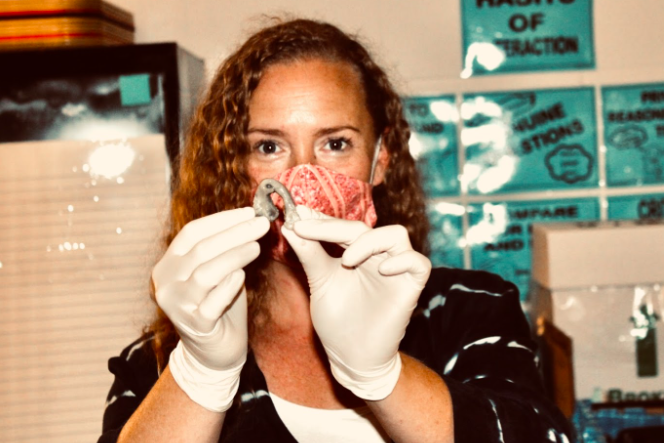A Look Inside Central’s Scientific Research Class
A LOOK INTO CENTRAL’S SCIENTIFIC RESEARCH CLASS — April Hashe holding a chicken bone that was soaked in vinegar, which made it pliable.
This year, April Hashe’s Scientific Research class has been focusing on studying the techniques used to connect evidence with a crime, also known as forensic science. Over the course of the semester, the class studied crime scenes, Deoxyribonucleic Acid (DNA), and blood spatter. School Resource Officer Marcus Dotson stopped by the classroom and shared his knowledge and experiences as a police officer that applied to forensic science.
Last month, the students began their anthropology and odontology unit. The class has performed multiple experiments on bones, as well as substances that can alter them. The class has started to focus on forensic odontology: the application of how dental science relates to legal investigations.

Dr. Michael Sims, D.M.D., visited Hashe’s class to educate the students about forensic odontology and its applications. Sims, the owner of Northgate Family Dentistry, explained to the class the importance of forensic odontology.
Sims, along with Hashe and her students, discussed how forensic odontology was used in mass casualty incidents such as the 2006 Comair plane crash. They also talked about the influence of forensic odontology at the body farm at the Forensic Anthropology Center in Knoxville, Tennessee.
“Dr. Sims did a great job, it was extremely helpful that he shared his stories and experiences,” explained Hashe.
During the presentation, Sims passed around a composite human skull and a bobcat skull to compare the differences in jaw structure. He also passed around a model set of human teeth for students to see the variation in root and crown structure.
“Human teeth are unique… they can be just as helpful in identification as a fingerprint,” Dr. Sims described. “Forensic odontology is used when you are dealing with remains that are severely burned or mangled.”
After speaking, Sims donated extracted human teeth to the class. In the coming weeks, the class will explore how certain acids affect tooth enamel and how teeth can be physically and chemically altered.
“It is super fun to conduct experiments about tooth decay with real human teeth. It’s great to prove what we talked about in class,” stated Hashe.
Hashe’s students are eager to see the results of their experiments and are looking forward to future units and presentations in the class.




